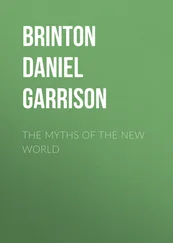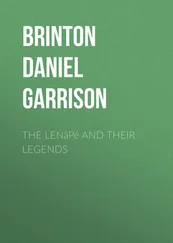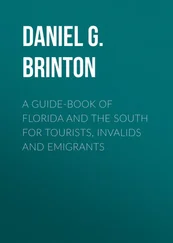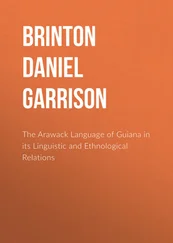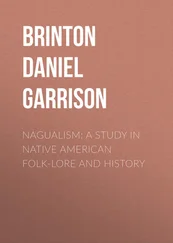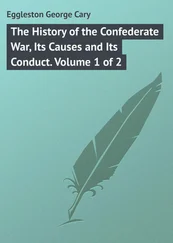Daniel Brinton - Notes on the Floridian Peninsula; its Literary History, Indian Tribes and Antiquities
Здесь есть возможность читать онлайн «Daniel Brinton - Notes on the Floridian Peninsula; its Literary History, Indian Tribes and Antiquities» — ознакомительный отрывок электронной книги совершенно бесплатно, а после прочтения отрывка купить полную версию. В некоторых случаях можно слушать аудио, скачать через торрент в формате fb2 и присутствует краткое содержание. Жанр: foreign_antique, История, История, foreign_edu, на английском языке. Описание произведения, (предисловие) а так же отзывы посетителей доступны на портале библиотеки ЛибКат.
- Название:Notes on the Floridian Peninsula; its Literary History, Indian Tribes and Antiquities
- Автор:
- Жанр:
- Год:неизвестен
- ISBN:нет данных
- Рейтинг книги:3 / 5. Голосов: 1
-
Избранное:Добавить в избранное
- Отзывы:
-
Ваша оценка:
- 60
- 1
- 2
- 3
- 4
- 5
Notes on the Floridian Peninsula; its Literary History, Indian Tribes and Antiquities: краткое содержание, описание и аннотация
Предлагаем к чтению аннотацию, описание, краткое содержание или предисловие (зависит от того, что написал сам автор книги «Notes on the Floridian Peninsula; its Literary History, Indian Tribes and Antiquities»). Если вы не нашли необходимую информацию о книге — напишите в комментариях, мы постараемся отыскать её.
Notes on the Floridian Peninsula; its Literary History, Indian Tribes and Antiquities — читать онлайн ознакомительный отрывок
Ниже представлен текст книги, разбитый по страницам. Система сохранения места последней прочитанной страницы, позволяет с удобством читать онлайн бесплатно книгу «Notes on the Floridian Peninsula; its Literary History, Indian Tribes and Antiquities», без необходимости каждый раз заново искать на чём Вы остановились. Поставьте закладку, и сможете в любой момент перейти на страницу, на которой закончили чтение.
Интервал:
Закладка:
The next work in chronological order was written by Charles Vignoles, a “civil and topographical engineer,” and subsequently public translator at St. Augustine. In the Introduction he remarks, “The following observations on the Floridas have been collected during a residence in the country; in which period several extensive journeys were made with a view of obtaining materials for the construction of a new map, and for the purpose now brought forward.” He notices the history, topography, and agriculture, the climate and soil of the territory, gives a sketch of the Keys, some account of the Indians, and is quite full on Land Titles, then a very important topic, and adds to the whole a useful Appendix of Documents relative to the Cession. 99 99 Observations on the Floridas. 8vo. New York, 1823. pp. 197.
Vignoles is a dry and uninteresting composer, with no skill in writing, and his observations were rather intended as a commentary on his map than as an independent work.
Energetic attempts were shortly made to induce immigration. Hopes were entertained that a colony of industrious Swiss might be persuaded to settle near Tallahassie, where it was supposed silk culture and vine growing could be successfully prosecuted. When General Lafayette visited this country he brought with him a series of inquiries, propounded by an intelligent citizen of Berne, relative to the capabilities and prospects of the land. They were handed over to Mr. McComb of that vicinity. His answers 100 100 Answers of David B. McComb, Esq., with an accompanying Letter of General Lafayette. 8vo. Tallahassie, 1827. See the North Am. Review, Vol. XXVI., p. 478.
are tinged by a warm fancy, and would lead us to believe that in middle Florida had at last been found the veritable Arcadia. Though for their purpose well suited enough, for positive statistics it would be preferable to seek in other quarters.
In 1826, there was an Institute of Agriculture, Antiquities, and Science organized at Tallahassie. At the first (and, as far as I am aware, also the last) public meeting of this comprehensive society, Colonel Gadsden was appointed to deliver the opening address. 101 101 Oration delivered by Colonel James Gadsden to the Florida Institute of Agriculture, Antiquities and Science, at its first Public Anniversary, Thursday, Jan. 4th, 1827. See the North Am. Review, Vol. XXV., p. 219.
This was afterwards printed and favorably noticed by some of the leading journals. Apparently, however, it contained little at all interesting either to the antiquarian or scientific man, but was principally taken up with showing the prospect of a rapid agricultural developement throughout the country.
Neither were general internal improvements slighted. A project was set on foot to avoid the dangerous navigation round the Florida Keys by direct transportation across the neck of the peninsula—a design that has ever been the darling hobby of ambitious Floridians since they became members of our confederacy, and which at length seems destined to be fulfilled. Now railroads, in that day canals were to be the means. As early as 1828, General Bernard, who had been dispatched for the purpose, had completed two levellings for canal routes, had sketched an accurate map on an extended scale, and had laid before the general government a report embracing a topographical and hydrographical description of the territory, the result of his surveys, with remarks on the inland navigation of the coast from Tampa to the head of the delta of the Mississippi, and the possible and actual improvements therein. 102 102 Message of the President in relation to the Survey of a Route for a Canal between the Gulf of Mexico and the Atlantic Ocean; with the Report of the Board of Internal Improvement on the same, with a general map annexed, February 28, 1829. A flowery article of ten pages may be found on this in the Southern Review, Vol. VI., p. 410.
Notwithstanding these magnificent preparations, it is unnecessary to add, the canal is still unborn.
One great drawback to the progress of the territory was the uncertainty of Land Titles. During the Spanish administration nearly the whole had been parcelled out and conferred in grants by the king. Old claims, dating back to the British regime, added to the confusion. Many of both had been sold and resold to both Spanish and American citizens. In the Appendix to Vignoles, and in Williams’ View of West Florida, many pages are devoted to this weighty and very intricate subject. Some of these claims were of enormous extent. Such was that of Mr. Hackley, which embraced the whole Gulf coast of the peninsula and reached many miles inland. This tract had been a grant of His Catholic Majesty to the Duke of Alagon, and it was an express stipulation on the part of the United States, acceded to by the king, that it should be annulled. But meanwhile the Duke had sold out to Mr. Hackley and others, who claimed that the king could not legally dispossess American citizens. A pamphlet was published 103 103 Titles and Legal Opinions on Lands in East Florida belonging to Richard S. Hackley, 8vo., Fayetteville, (N. Car.,) 1826, pp. 71. See the North American Review, Vol. XXIII., p. 432. Hackley’s grant is laid down on Williams’ Map.
containing all the documents relating to the question, and the elaborate opinions of several leading lawyers, all but one in favor of Mr. Hackley. After a protracted suit, the Gordian knot was finally severed by an ex post facto decree of His Majesty, that a crown grant to a subject was in any case inalienable, least of all to a foreigner.
The work of Col. John Lee Williams just mentioned, 104 104 A View of West Florida, embracing its Topography, Geography, &c., with an Appendix treating of its Antiquities, Land Titles, and Canals, and containing a Chart of the Coast, a Plan of Pensacola, and the Entrance of the Harbor. 8vo. Phila., 1827, pp. 178.
though ostensibly devoted to West Florida takes a wider sweep than the title page denotes. Its author went to Florida in 1820, and was one of the commissioners appointed to locate the seat of government. While busied with this, he was struck with the marked deficiency of all the then published maps of the country, “and for my own satisfaction,” he adds, “I made a minute survey of the coast from St. Andrew’s Bay to the Suwannee, as well as the interior of the country in which Tallahassie is situated.” A letter from Judge Brackenridge, alcalde of St. Augustine, principally consisting of quotations from Roberts, is all that touches on antiquities. Except this, and some accounts of the early operations of the Americans in obtaining possession, and the statements concerning Land Titles, the book is taken up with discussions of proposed internal improvements of very local and ephemeral interest.
All the details of any value that it contains he subsequently incorporated in his Civil and Natural History of the Territory, 105 105 The Territory of Florida; or Sketches of the Topography, Civil and Natural History of the Country, the Climate and the Indian Tribes, from the First Discovery to the Present Time. 8vo. New York, 1837.
published ten years later. Most of the intervening time he spent in arduous personal researches; to quote his own words, “I have traversed the country in various directions, and have coasted the whole peninsula from Pensacola to St. Mary’s, examining with minute attention the various Keys or Islets on the margin of the coast. I have ascended many of the rivers, explored the lagoons and bays, traced the ancient improvements, scattered ruins, and its natural productions by land and by water.” Hence the chief value of the work is as a gazetteer. The civil history is a mere compilation, collected without criticism, and arranged without judgment; an entire ignorance of other languages, and the paucity of materials in our own, incapacitated Williams from achieving anything more. Nor can he claim to be much of a naturalist, for the frequent typographical errors in the botanical names proclaim him largely debtor to others in this department. His style is eminently dry and difficult to labor through, and must ever confine the History to the shelf as a work of reference, and to the closet of the painful student. Yet with all its faults—and they are neither few nor slight—this is the most complete work ever published concerning the territory of Florida; it is the fruit of years of laborious investigation, of absorbing devotion to one object, often of keen mental and bodily suffering, and will ever remain a witness to the energy and zeal of its writer.
Интервал:
Закладка:
Похожие книги на «Notes on the Floridian Peninsula; its Literary History, Indian Tribes and Antiquities»
Представляем Вашему вниманию похожие книги на «Notes on the Floridian Peninsula; its Literary History, Indian Tribes and Antiquities» списком для выбора. Мы отобрали схожую по названию и смыслу литературу в надежде предоставить читателям больше вариантов отыскать новые, интересные, ещё непрочитанные произведения.
Обсуждение, отзывы о книге «Notes on the Floridian Peninsula; its Literary History, Indian Tribes and Antiquities» и просто собственные мнения читателей. Оставьте ваши комментарии, напишите, что Вы думаете о произведении, его смысле или главных героях. Укажите что конкретно понравилось, а что нет, и почему Вы так считаете.

